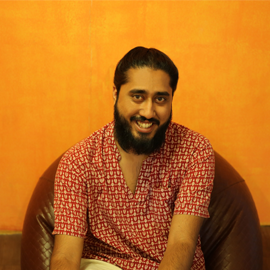China's the new Hindu Nation: they're factory-making 1 million cows a year

For decades now, scientists and world leaders have debated the ethical and health implications of cloning. But in China, pragmatism has won over ethical conundrums.
The powers that be in the world's most populous country have embraced animal cloning in an attempt to solve the problem of how to feed 1.4 billion mouths.
Beefing up
Come 2016, the Chinese port city of Tianjin will pay home to the world's largest animal cloning facility.
The facility, a joint initiative between China's commercial genetic company Boyalife and South Korea's Sooam Biotech, aims to produce 1 million cow embryos a year at its peak.
Also read - Despite all the politics, India's share in world beef export increases
The primary purpose of the $31 million USD facility? To produce beef. Lots and lots of beef.
At its inception, the facility is expected to produce 100,000 cow embryos a year. That sounds a lot, but pales in comparison to the tenfold increase they intend to achieve by 2020, when they hope to produce a million cow embryos. At its peak, the facility is expected to produce 5% of the premium cows slaughtered in China.
If there's a struggle, it's in fighting negative perceptions about the safety of eating cloned beef. In reality, though, so far there is little evidence to suggest anything dangerous. In fact, both the US Food and Drug Administration as well as the European Food Safety Authority have both stated that cloned meat is no different from regular meat.
It's not like cloned cattle aren't already a part of today's world. They're already prevalent in many countries like the US and UK. However, most cloned cattle aren't used for slaughter but rather as breeding stock. In the UK, cloned meat is considered a "novel food" and is sellable after government clearance.
The real danger here is not the meat, but rather the ethical issue of animal welfare. This is due to the high rate of death for cloned animals at every stage of development.
Cloning, a cash cow
Ethical implications aside, the move is a commercially sound one. China's beef consumption is ever-increasing. In fact, China's beef consumption jumped from 9.1 pounds per capita in 2011 to 9.8 pounds in 2014. While that is tiny compared to the global average which is closer to 18 pounds.
Even so, it has to be noted that the price of beef almost doubled in the same period. Given that China's beef rates are among the highest in the world (close to $20 per kilo), the increase in consumption is a situation waiting to be exploited.
Also read - Five tech companies are bigger than Facebook and Google: all are from China
And this is at a time when beef production has been decreasing in China, forcing the country to import over 300,000 metric tonnes of beef a year, that number is set to go upwards of 700,000 tonnes by 2023-24.
For a country with a rapidly growing middle class and facing an economic slowdown, initiatives such as Boyalife's are almost imperative.
Raising the steaks
While the focus will almost certainly be cows, the facility will work on cloning a large variety of animals for various purposes. The company expects to clone dogs, both as pets as well as specialised sniffer dogs for use in police work and airports. Sooam already offer a service where they recreate dead pet dogs, reportedly for $100,000 a dog.
In addition, the company also intends to get into the lucrative industry of producing thoroughbred racehorses. The company has also set it sights on cloning primates to create better test subjects for disease research. From here, it shouldn't be too much of a stretch for the company to even clone humans, something Xiaochun says is possible.
China is set to play host to the world's largest animal cloning facility, one that intends to produce 100,000 cows a year for food
In a statement to AFP, Xu stated that "the technology is already there," and "if this is allowed, I don't think there are other companies better than Boyalife that make better technology."
In addition the new facility will also play host to a genebank capable of holding DNA samples of the world's endangered species. Something that, in future, could be used to bring back extinct species and preserve currently-endangered populations of animals.
All of which sounds theoretically excellent but is an ethical minefield.
No mad scientists here... well, one
Boyalife might be a new name to most, but in the world of commercial genetics there are few companies bigger.
With a capital of US $2 billion, they're the owners of the world's largest and most automated stem cell bank. The company's subsidiary BoyaGene is also the owner of 1.38 million copies of genetic information with 960 trillion pieces of DNA data, making it the world's largest Genebank.
Sooam however, is a different kettle of fish... err... dog. The company's founder, Hwang Woo-suk, is known as the 'king of cloning'. But he has a darker side. Hwang was disgraced in 2006 after he was found guilty of research fraud and gross ethical lapses in obtaining human eggs for experimentation.
Even so, Sooam is the company that pioneered dog cloning, and has supplied over 500 specialised dogs to various countries for use in airports and customs. Despite Hwang's dodgy track record, when it comes to cloning, these two companies are probably among the best equipped to handle it.
MORE AT CATCH - Women in Iran's orchestra were just pulled off stage. Because they're female
ISIS isn't ravaging Afghanistan. But who wants to take a chance







![BJP's Kapil Mishra recreates Shankar Mahadevan’s ‘Breathless’ song to highlight Delhi pollution [WATCH] BJP's Kapil Mishra recreates Shankar Mahadevan’s ‘Breathless’ song to highlight Delhi pollution [WATCH]](https://images.catchnews.com/upload/2022/11/03/kapil-mishra_240884_300x172.png)

![Anupam Kher shares pictures of his toned body on 67th birthday [MUST SEE] Anupam Kher shares pictures of his toned body on 67th birthday [MUST SEE]](https://images.catchnews.com/upload/2022/03/07/Anupam_kher_231145_300x172.jpg)






